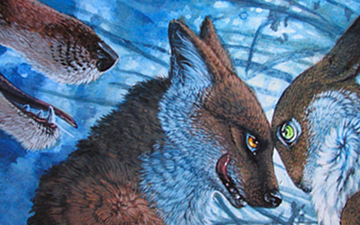Food chains and food webs are representations of the predator-prey relationships betweenspecies within an ecosystem or habitat.
Many chain and web models can be applicable depending on habitat or environmentalfactors. Every known food chain has a base made of autotrophs, organisms able to manufacture their own food (e.g. plants, chemotrophs).
In nearly all food chains, solar energy is input into the system as light and heat, utilized by autotrophs (i.e., producers) in a process called photosynthesis. Carbon dioxide is reduced (gains electrons) by being combined with water (a source of hydrogen atoms), producing glucose. Water splitting produces hydrogen, but is a nonspontaneous (endergonic) reaction requiring energy from the sun. Carbon dioxide and water, both stable, oxidized compounds, are low in energy, but glucose, a high-energy compound and good electron donor, is capable of storing the solar energy.[1] This energy is expended for cellular processes, growth, and development. The plant sugars arepolymerized for storage as long-chain carbohydrates, including other sugars, starch, and cellulose.
Glucose is also used to make fats and proteins.[2] Proteins can be made using nitrates, sulfates, and phosphates in the soil.[3] When autotrophs are eaten by heterotrophs, i.e., consumers such as animals, the carbohydrates, fats, and proteins contained in them become energy sources for the heterotrophs.[2]
(From Wikipedia, January 27, 2011)


